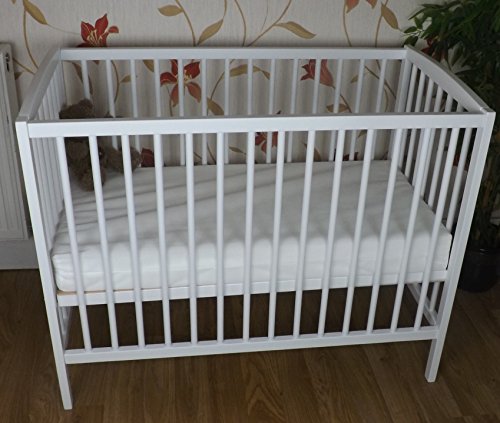Five Killer Quora Answers To Tots And Cots
페이지 정보
작성자 Catharine 작성일25-08-10 05:13 조회11회 댓글0건관련링크
본문
Tots and Cots: A Comprehensive Guide for Parents
When it comes to making sure a safe and comfortable sleeping environment for children and toddlers, the choices parents make-- ranging from cribs to cots-- can considerably affect their well-being. Today's short article dives deep into the complexities of picking the very best sleeping plans for tots, highlighting safety, design, functionality, and how these options progress as a kid grows.
Comprehending Tots and Cots
Tots and cots normally describe children, particularly young children aged in between 1 to 3 years, while cots are the sleeping arrangements specifically developed for babies and toddlers. The suitable sleeping devices for this age group includes various types of cots, cribs, and young child beds.
Kinds of Cots
Numerous designs exist to fulfill the diverse requirements of both moms and dads and children. Below is a list outlining the most common kinds of cots offered:
Standard Crib
- A conventional crib is created for babies and typically includes sides that can be adapted to different heights.
Convertible Crib
- This kind of crib can transform into a toddler bed, daybed, or full-sized bed as the kid grows, making it a long-lasting financial investment.
Portable Crib
- Also called travel cots, these are light-weight and easily foldable, ideal for taking a trip or smaller sized living areas.
Co-Sleeper
- A co-sleeper crib connects to the side of the moms and dads' bed, enabling easy access while ensuring the baby has a separate and safe sleeping space.
Young child Bed
- A toddler bed is a little bed that resembles a standard bed but is designed specifically for toddlers, generally including safety rails.
Mini Crib
- Mini cribs are smaller sized than basic cribs, making them a great alternative for tight areas, but they are appropriate for babies just.
Security Considerations
Ensuring safety is paramount when picking a cot for a kid. Here are critical safety standards moms and dads ought to consider:
- Check for CPSC Certification: Ensure that the cot abides by the Consumer Product Safety Commission (CPSC) standards.
- Avoid Drop-Sides: Cots with drop-sides have actually been connected to security risks, and the most recent security guidelines forbid them.
- Utilize a Firm Mattress: A company bed mattress lowers the threat of suffocation and ought to fit snugly within the cot.
- Keep Bedding Simple: Use a fitted sheet and prevent pillows, comforters, and packed animals that can pose suffocation risks.
- Follow Weight and Age Guidelines: Ensure the kid has actually not surpassed the cot's weight limitation and is still within the suggested age.
Transitioning from a Cot to a Toddler Bed
The transition from a cot to a toddler bed can be a psychological turning point for both parents and kids. Here are steps to ease the transition:
Timing
Deciding when to transition can be subjective, however it's generally suggested to make the switch between 18 months and 3 years, based on factors like:
- Physical Ability: If the child is climbing up out of the cot.
- Potty Training: Consider transitioning if the kid is bathroom training and needs simpler gain access to.
- Habits: Exhibiting signs of maturity, such as following guidelines or revealing a desire for self-reliance.
Tips for Making the Transition Smooth
Include Your Child: Let the child choose their brand-new bedding or bed design to instill enjoyment about the modification.
Keep Routine Consistent: Maintain the child's bedtime regimen to supply comfort throughout this duration of change.
Discuss the Change: Discuss the shift to a young child bed favorably, making it sound like a terrific experience.
Precaution: Place the bed versus the wall or usage bed rails to avoid falling during sleep.
Choosing the Right Bed
When picking a young child bed, moms and dads need to think about aspects like:
- Height: Low-profile beds are ideal for young children who might fall out during sleep.
- Durability: Ensure the bed can endure active play along with sleep.
- Design and style: Choose a design that matches the child's room and is attracting the child.
Picking the right cot for your kid can be a challenging process, but comprehending the choices available, essential safety factors to consider, and the best timing for transitioning to a toddler bed can make this journey easier for moms and dads. Investing time and effort into these choices will guarantee that your kid has a safe, comfy, and supporting sleep environment.
Frequently asked questions
1. What is the distinction in between a cot and a crib?
- A cot is usually a smaller bed designed for younger toddlers, while a crib is a larger bed that is usually appropriate for babies up to 3 years old.
2. When should I move my kid from a crib to a toddler bed?
- The shift time is typically between 18 months and 3 years; this change is based on the child's physical abilities and behavioral signs.
3. How can I guarantee my child is safe while sleeping?
- Always abide by security standards, utilize a firm bed mattress with a basic bed linen arrangement, and keep track of the cot's weight limit.
4. What should I do if my kid attempts to climb up out of the cot?

- If your kid is climbing up out, it may be time to consider transitioning to a young child bed to avoid falls.
5. Can I use the very same bed mattress when transitioning?
- Usually, it is best to change the crib bed mattress with one that specifies to the young child bed. Guarantee it fits comfortably and adheres to safety standards.
By considering these elements, moms and dads can design healthy sleep routines and provide their children with a secure environment that promotes restful sleep. Purchasing quality sleeping arrangements will add to the child's general development and happiness.
